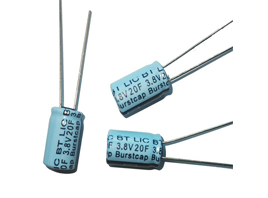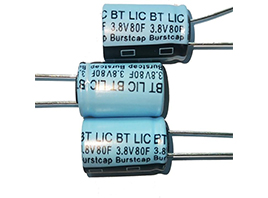Consulting phone:
135-3037-2041
(Mr.Wang)
The effect of capacitors in the circuit: In a DC circuit, a capacitor is equivalent to an open circuit. A capacitor is a component that can store electric charge, and it is also one of the most commonly used electronic components.
Capacitors, generally referred to as their ability to contain charges, are capacitors, indicated by the letter C. Definition 1: Capacitor, literally, is a container that holds electricity and is a device that contains electric charge. English name: capacitor.
Capacitors are one of the many electronic components used in electronic equipment, and are widely used in circuit blocking, coupling, bypassing, filtering, tuning loops, energy conversion, control and other aspects. Definition 2: Capacitor, any two conductors (including wires) that are insulated from each other and are very close to each other constitute a capacitor.
Capacitors are different from capacitors. Capacitance is a fundamental physical quantity, symbol C, and the unit is F (farad).

General formula C=Q/U Special formula for parallel plate capacitors: electric field strength between plates E=U/d, capacitor capacitance determination formula C=εS/4πkd.
With the rapid development of electronic information technology, the replacement of digital electronic products is getting faster and faster, and the production and sales of consumer electronic products such as flat-panel TVs (LCD and PDP), notebook computers, digital cameras and other products have continued to grow, driving capacitors. Industry growth.
The process of causing a charged capacitor to lose its charge (release charge and electrical energy) is called discharge. For example, connect the two poles of a capacitor with a wire, and the charges on the two poles neutralize each other, and the capacitor will release charge and electrical energy.
After discharge, the electric field between the two polar plates of the capacitor disappears, and the electrical energy is converted into other forms of energy. In general electronic circuits, capacitors are often used to complete bypassing, coupling, filtering, oscillation, phase shifting, and waveform transformation. These effects are the evolution of their charging and discharging functions.
This has to start with the structure of the capacitor. A simple capacitor is composed of polar plates at both ends and an insulating dielectric (including air) at the center. After being energized, the plates are charged to form a voltage (potential difference), but due to the insulating material in the center, the entire capacitor is non-conductive.

However, such a situation is under the premise that the critical voltage (breakdown voltage) of the capacitor is not exceeded. We know that any substance is relatively insulating. When the voltage at both ends of the substance increases to a certain extent, the substance can conduct electricity. We call this voltage the breakdown voltage.
Capacitors are no exception. After a capacitor is broken down, it is not an insulator. However, in the middle school stage, such a voltage is not seen in the circuit, so it all works below the breakdown voltage and can be regarded as an insulator. However, in the communication circuit, the direction of the current changes with time as a certain function.
The process of charging and discharging the capacitor has a time. At this time, a changing electric field is formed between the plates, and this electric field is also a function of changing with time. In fact, current flows between capacitors in the form of a field.
In the middle school stage, there is a saying, it is called communication, blocking DC, which is the nature of capacitors.